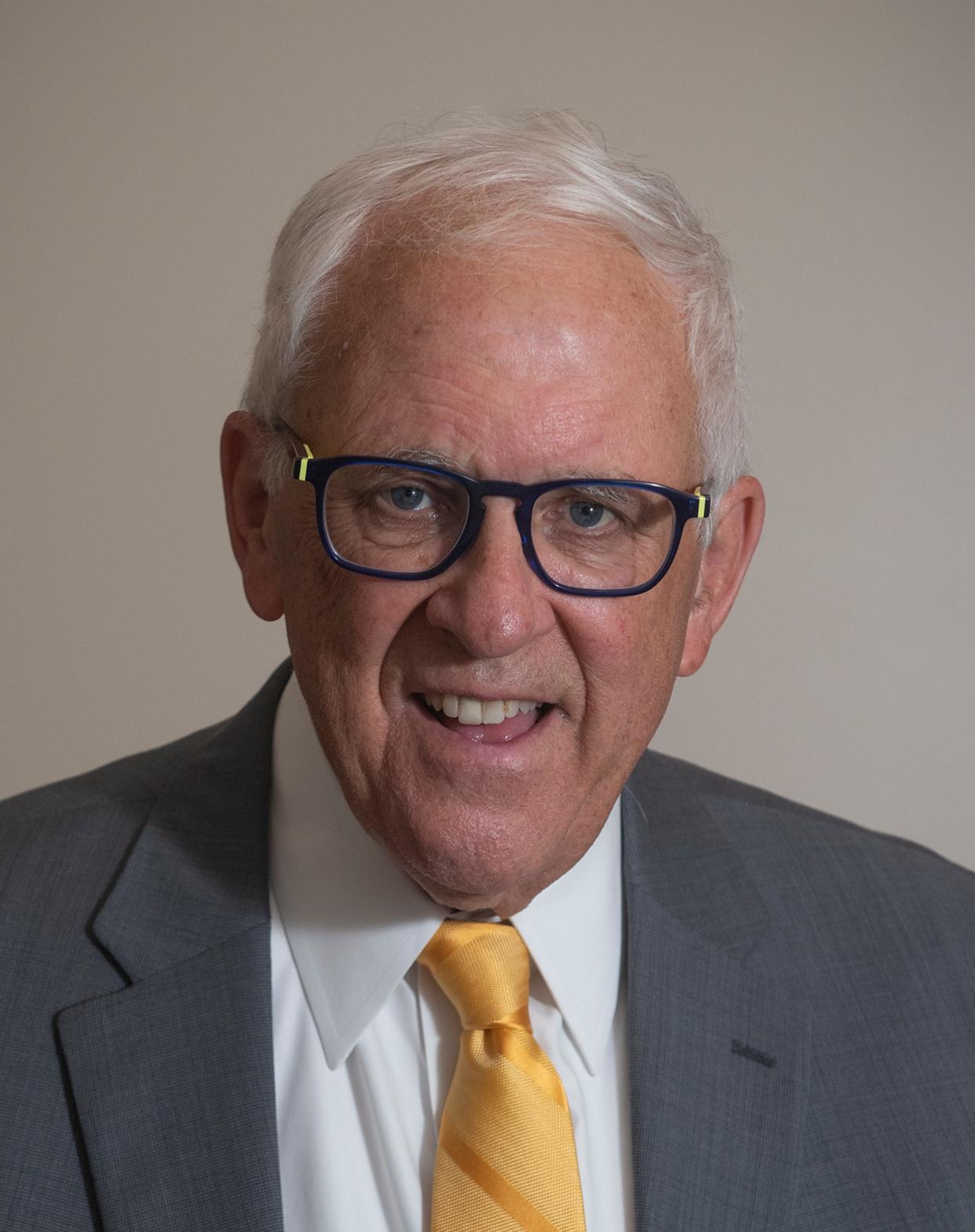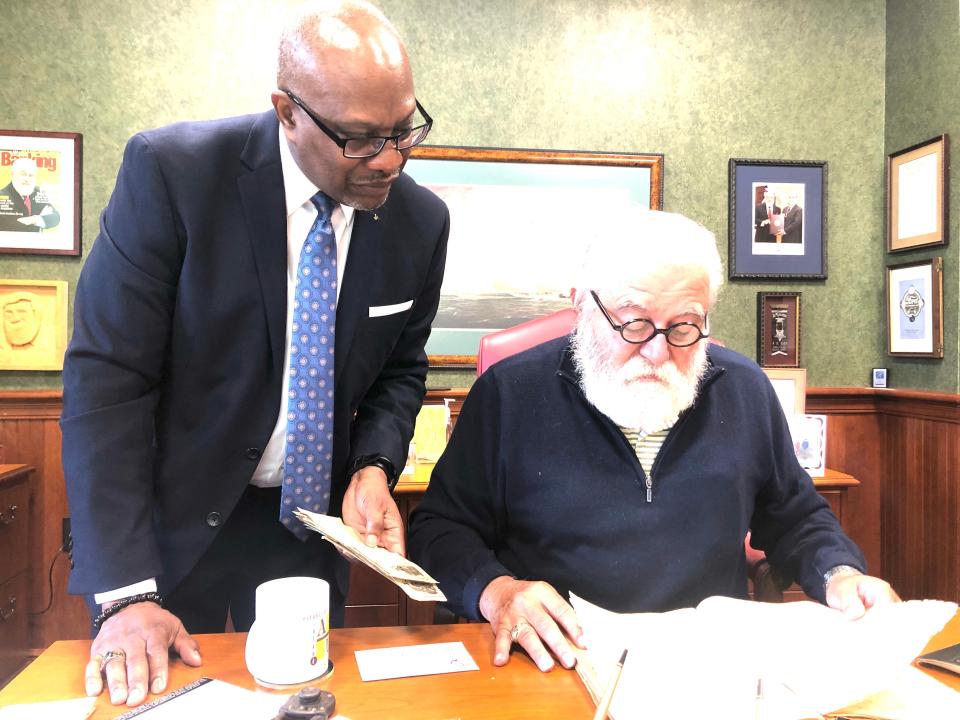Savings passbooks recall Erie railroad recruitment of Black skilled labor | Along The Way

Two savings passbooks, dated 1922 and owned by H.K. Gant, recently enriched a collection of historical artifacts contained in a cabinet in the lobby of Kent’s Hometown Bank.
Contributed by Brian Boykin, president of the Kent Board of Education, they indicate Gant, his maternal great grandfather, had deposited $50 with the bank. According to Howard Boyle, chairman of Hometown Bank, the deposit was probably a prerequisite to Gant, the pastor of Spelman Chapel African Methodist Episcopal Church, and a community leader, obtaining a loan to build his home at 329 Maple St.

According to Boyle, commercial banks in the early decades of the 20th century did not like long-term mortgage type loans and that gave rise to savings and loan institutions across the country, some of them sponsored by the banks.
Kent National Bank, founded by the Kent family, was instrumental in the 1898 founding of Home Building & Loan, a forerunner of Hometown Bank. W.H.C. Parkhill, who managed Kent National Bank as its cashier, in the early years also served as treasurer of Home Building & Loan.
That is where Boykin’s great grandfather received his loan to build his home on Maple Street within easy walking distance of the Erie Railroad’s car shops, which at the time was the city’s leading manufacturer and employer. The company’s car shops built all kinds of railroad cars there including very ornate passenger cars.
Boykin said his great grandfather, a native of Memphis, Tennessee, left the Jim Crow South to come north to Kent along with other skilled African Americans whom the Erie Railroad recruited to work in its factories on Franklin Avenue. They were needed to fill jobs left vacant when workers enlisted to fight in World War I. After the war, the company continued to recruit skilled African Americans to undermine a union campaign by employees.
Labor strife and a changing economy led to the closing of the Erie’s car shop factories. Boykin said his great grandfather survived by taking on work others would not including cleaning out septic systems in homes and businesses not plugged into the community wastewater system. He also became pastor of the Spelman Chapel African Methodist Episcopal Church, which stands at 910 Walnut St. The church has served as an important center for Kent’s Black community and that made the Reverend H.K. Gant an important spokesman who held the trust of Black and white communities.
Howard, whose avocation is history and who is passionate about local history, recounts a story he was told of Gant’s brokering a handshake agreement for a local downtown restaurant that served white and Black customers in an era when that was not customary. Because Kent’s Black community knew they were welcome in the restaurant, they sometimes dined in overwhelming numbers that discouraged white customers from showing up. Fearful of losing their white customers, the restaurant owners appealed to the Reverend Gant for help. An agreement was arrived at in which Black customers would voluntarily limit the numbers showing up at one time.
“The owners said the assistance of Reverend Gant enabled them to stay in business,” Boyle said.
The esteem with which the pastor was held by white leadership in Kent is evident in a newspaper photo at a celebration to benefit the church, which was named Spelman Chapel African Methodist Episcopal Church due to the financial support of Henry Spelman, who owned the icehouse at Brady Lake. In the photo are Kent State President J.O. Engleman, former Congressman Martin L. Davey, Judge C.W. Nelson, business leader Roy Donaghy and Henry Spelman. For Ravenna historians, the support of Ravenna’s Proctor family in the early years of Kent’s Spelman AME Church is noteworthy.
Boykin said his great grandfather, H.K. Gant and his wife, Lydia, had five daughters: Anna May Dunaway, Lydia Meritt, Ruth Cox, Hazzie Yerby and Ella Gant. His Boykin family name came from a next generation marriage.
Stories of a community give it identity and direction. The historian in Boyle appreciates how a sense of one’s history can empower. The decoration of the lobbies of Hometown Bank in Kent with its spectacular mural and Ravenna with its historically themed photos, reflect this.
Even the cabinet that holds the two passbooks of the Rev. H.K. Gant is part of local history. According to Boyle, it was rescued from the Herriff furniture store that once stood in downtown Kent on North Water Street. Restored, it now occupies a prominent spot in Hometown Bank’s offices and headquarters at 142 N. Water St.
David E. Dix is a retired publisher of the Record-Courier.
This article originally appeared on Akron Beacon Journal: Savings passbooks on display at bank help tell Kent's history

